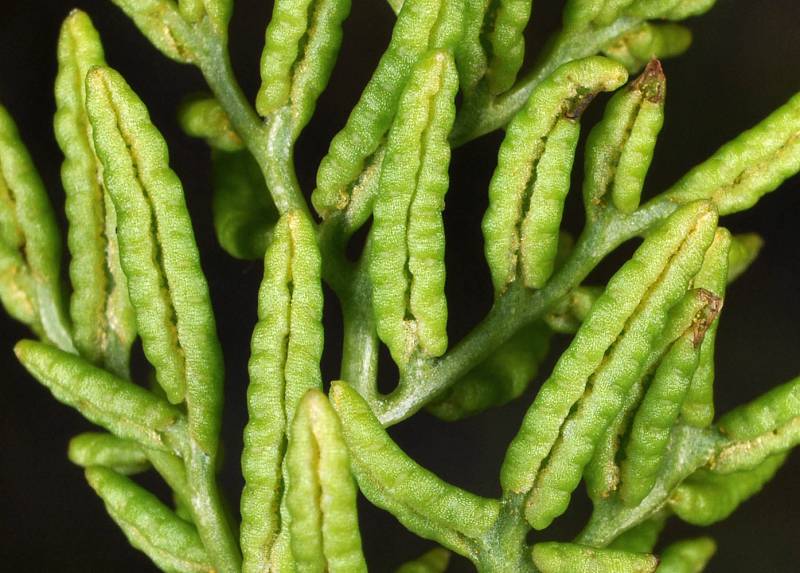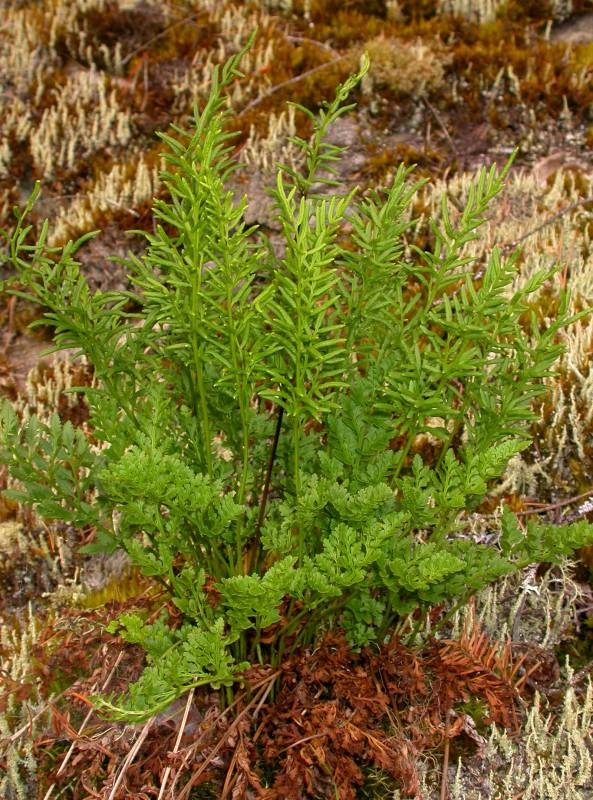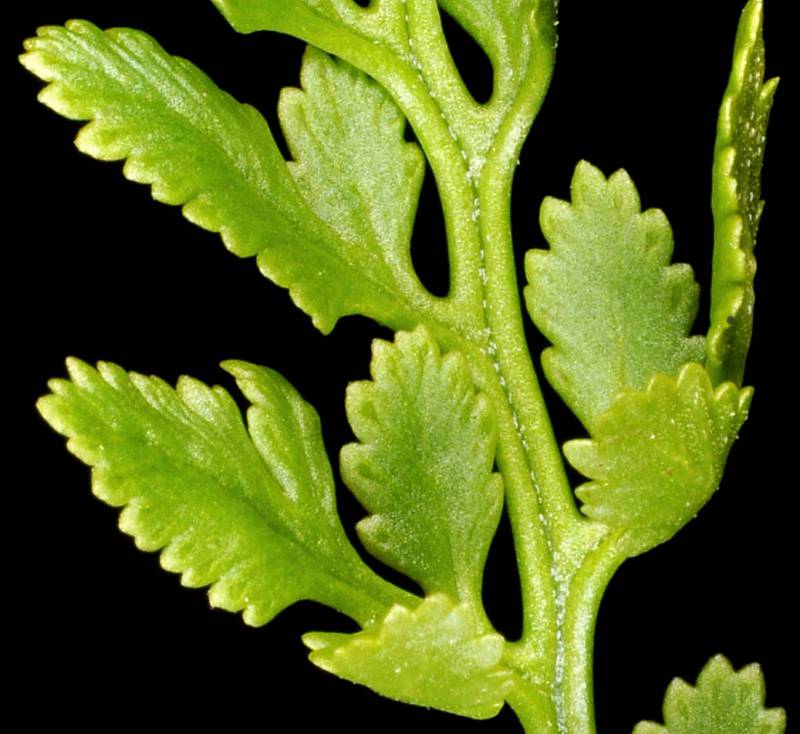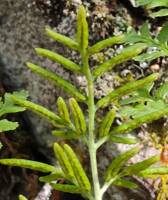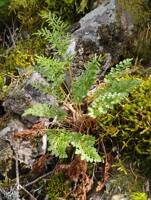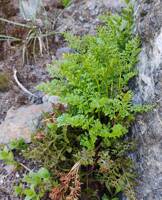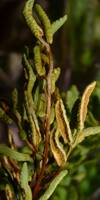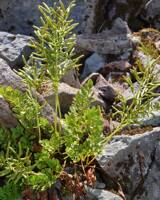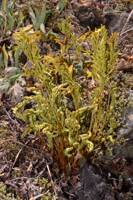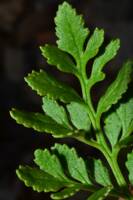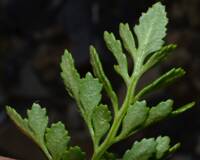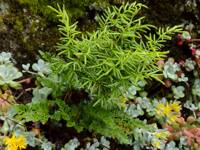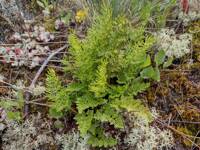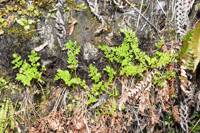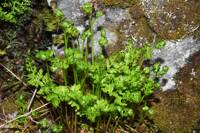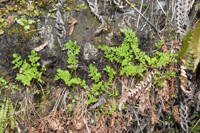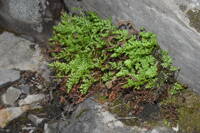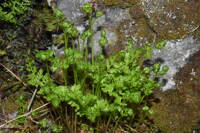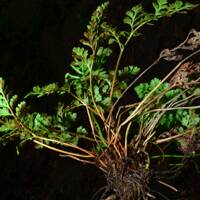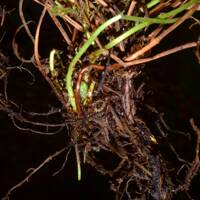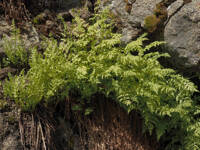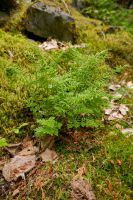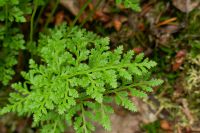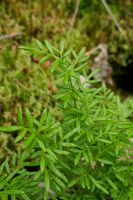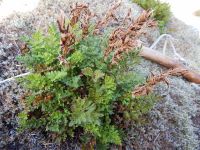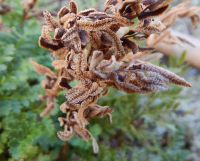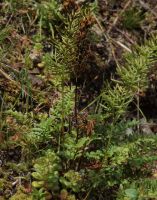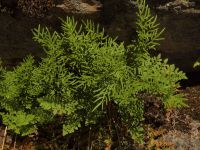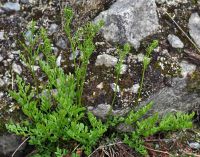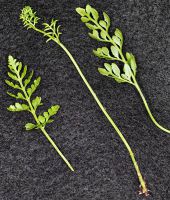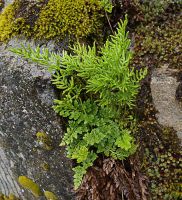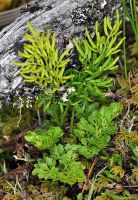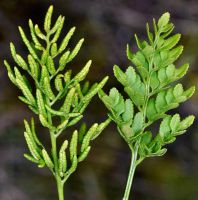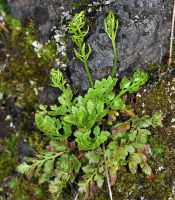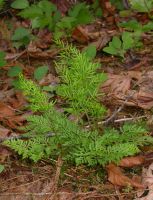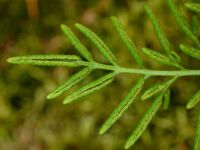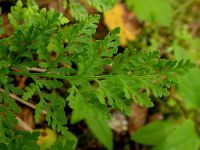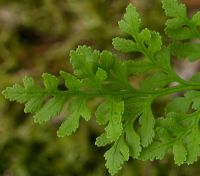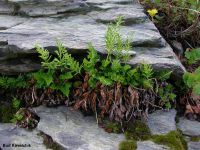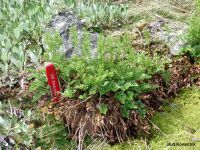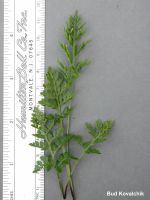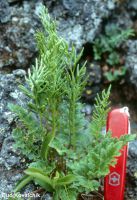Distribution: Occurring on both sides of the Cascades crest in Washington; Alaska to California, east to the Great Lakes region, Colorado, and New Mexico.
Habitat: Cliff crevices and talus slopes at mid- to high elevations in the mountains
Origin: Native
Growth Duration: Perennial
Conservation Status: Not of concern
Lithophytic perennials; stems decumbent to erect, many-branched from base, stout, 10-20 mm in diameter; scales bicolored, dense, broad-lanceolate to linear, up to 6 mm long and 2 mm broad.
Leaves in dense tufts, evergreen, persistent after fading; sterile leaves spreading and 3-17 cm, fertile leaves erect and 5-25 cm; hairs minute, appressed, cylindric, dispersed along grooves of petiole and along costae and costules of upper surface of blade; petioles green to pale yellow, dark brown on lower 1/8 or less, 1-2 mm broad, firm and strawlike, not collapsed; scales bicolored or not, becoming scarce distally; blade deltate to ovate-lanceolate, 2-3-pinnate, slightly leathery, opaque; sterile leaf segments oblong to ovate-lanceolate with cuneate bases, distal 2/3-1/2 of segments crenate to dentate, often with a slightly deeper incision every 2nd tooth; fertile leaf segments horizontal to ascending, strongly differentiated from those of sterile leaves, linear, 3-12 mm long and 1-2 mm broad, margins revolute and covering sporangia.
Sporangia dispersed along veins on lower leaf surface, often interspersed with farina-producing glands, each containing 64 spores; spores yellow, tetrahedral, warty.
Publication: Narr. Journey Polar Sea. 754, 767. 1823.
Cryptogramma crispa (L.) R. Br. ex Hook. var. acrostichoides (R. Br.) C.B. Clarke [HC]
PNW Herbaria: Specimen records of Cryptogramma acrostichoides in the Consortium of Pacific Northwest Herbaria database
WA Flora Checklist: Cryptogramma acrostichoides checklist entry
OregonFlora: Cryptogramma acrostichoides information
E-Flora BC: Cryptogramma acrostichoides atlas page
CalPhotos: Cryptogramma acrostichoides photos

